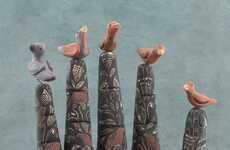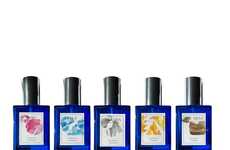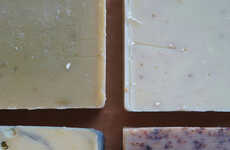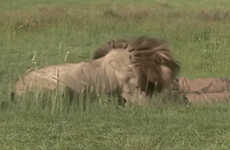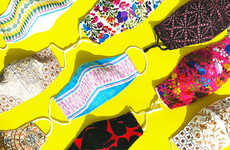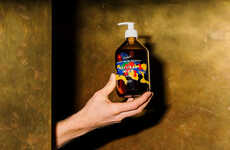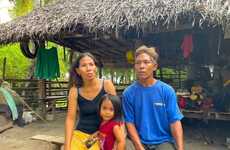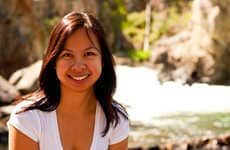
Afghanistan-Sourced Materials
Tiana Reid — April 30, 2012 — Social Good
References: arghand.org
Sarah Chayes is the founder of Arghand Cooperative, which is based in Afghanistan. SocialBusiness.org got the opportunity to gain some insight into how Chayes' method of wanting to construct change has changed over her various career choices.
Four Questions with Sarah Chayes
1. How did the idea for the business model come about?
The first hint of the idea came in 2003 when -- working for a different non-profit -- I hired an anthropologist to do a socio-economic impact study of engineering work on a canal system in Helmand Province, to the west of Kandahar. He mentioned roses and rose oil as a potential cash crop that could replace opium in that poppy-heavy district.
Some years later, I ran a dairy cooperative, and was speaking to villagers from whom I bought milk. They said: if you really want to help us you should do something with our fruit. Milk is really only pocket money for us. So I spent some time thinking about what to do with fruit. The problem is that fruit is heavy and perishable, and so difficult to export. I wanted a value-added process that could make fruit more stable for export, since there is far more surplus cash abroad than inside Afghanistan.
I happen to love high-quality soap (I've lived in France for decades), and when I turned over a bar of fine natural soap in France or the US, I found ingredients that were present in Kandahar: almonds for almond oil, apricot kernels for apricot kernel oil, and so on. But little did I know how many incredible and often unique inputs I would find once I started perusing the matter! It is truly amazing that such an apparently barren landscape can bring forth such a wealth of botanical treasures.
2. How did you decide to join this sector?
I initially went to Afghanistan as a journalist, covering the fall of the Taliban in late 2001 for National Public Radio. The conjuncture seemed so important that I decided to act on a frustration -- which had been growing over time -- at just talking about whatever major national international crisis I was covering. I felt it was time to see if I could help do something about it. So I left journalism in 2002 and founded an NGO, but I didn't move across to business until 2005. By that time it had really been driven home to me that a healthy, sustainable, and varied economy could be central to any positive developments in Afghanistan.
3. How do you get your inspiration?
I get most of my inspiration by reaching out to encounter difference. It has been a life-long journey, and it involves a certain degree of suspending my hold on my own identity. So it can be disorienting at times. But incredibly enriching.
I also love plastic arts -- especially work that has some utility, such as ceramics, "wearable art," etc. That predilection was very much at the heart of the inspiration to make bars of soap that were in effect usable sculptures.
4. How do you reset yourself to be creative? Do you have any rituals?
Walking, running, or best of all, bicycling. There is a way that being in motion seems to free my mind of the fetters that tie it down and obstruct free association when I am stationary.
Four Questions with Sarah Chayes
1. How did the idea for the business model come about?
The first hint of the idea came in 2003 when -- working for a different non-profit -- I hired an anthropologist to do a socio-economic impact study of engineering work on a canal system in Helmand Province, to the west of Kandahar. He mentioned roses and rose oil as a potential cash crop that could replace opium in that poppy-heavy district.
Some years later, I ran a dairy cooperative, and was speaking to villagers from whom I bought milk. They said: if you really want to help us you should do something with our fruit. Milk is really only pocket money for us. So I spent some time thinking about what to do with fruit. The problem is that fruit is heavy and perishable, and so difficult to export. I wanted a value-added process that could make fruit more stable for export, since there is far more surplus cash abroad than inside Afghanistan.
I happen to love high-quality soap (I've lived in France for decades), and when I turned over a bar of fine natural soap in France or the US, I found ingredients that were present in Kandahar: almonds for almond oil, apricot kernels for apricot kernel oil, and so on. But little did I know how many incredible and often unique inputs I would find once I started perusing the matter! It is truly amazing that such an apparently barren landscape can bring forth such a wealth of botanical treasures.
2. How did you decide to join this sector?
I initially went to Afghanistan as a journalist, covering the fall of the Taliban in late 2001 for National Public Radio. The conjuncture seemed so important that I decided to act on a frustration -- which had been growing over time -- at just talking about whatever major national international crisis I was covering. I felt it was time to see if I could help do something about it. So I left journalism in 2002 and founded an NGO, but I didn't move across to business until 2005. By that time it had really been driven home to me that a healthy, sustainable, and varied economy could be central to any positive developments in Afghanistan.
3. How do you get your inspiration?
I get most of my inspiration by reaching out to encounter difference. It has been a life-long journey, and it involves a certain degree of suspending my hold on my own identity. So it can be disorienting at times. But incredibly enriching.
I also love plastic arts -- especially work that has some utility, such as ceramics, "wearable art," etc. That predilection was very much at the heart of the inspiration to make bars of soap that were in effect usable sculptures.
4. How do you reset yourself to be creative? Do you have any rituals?
Walking, running, or best of all, bicycling. There is a way that being in motion seems to free my mind of the fetters that tie it down and obstruct free association when I am stationary.
Trend Themes
1. Afghanistan-sourced Materials - Using locally-sourced inputs in products can create economic opportunities for communities, while also fostering sustainable practices.
2. Value-added Processes - Developing value-added processes for perishable goods can increase export potential and boost revenue for communities.
3. Usable Sculptures - Creating usable sculptures can be a way to combine artistic expression with functional goods, driving innovation in product design.
Industry Implications
1. Sustainable Agriculture - Sourcing materials for products from local agriculture can create a sustainable industry in rural areas.
2. Artisanal Soap-making - Incorporating unique ingredients in soap-making can create a niche market for high-quality, handmade soap products.
3. Community-based Business - Establishing community-based businesses can create economic opportunities and drive positive development in impoverished areas.
1.2
Score
Popularity
Activity
Freshness

